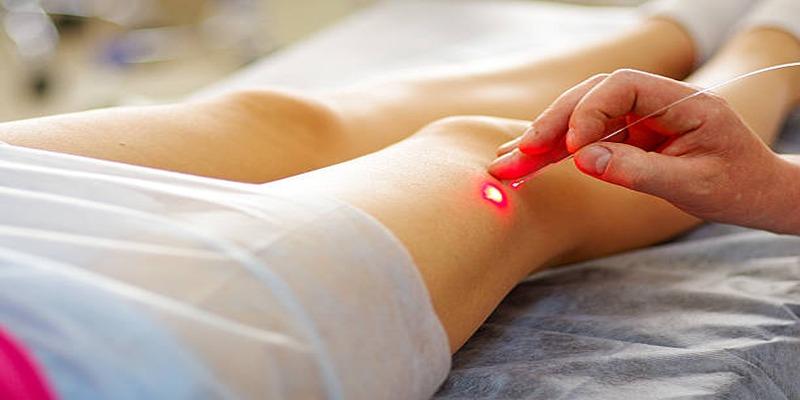Advertisement
A Guide to Safely Returning to Exercise Post-Varicose Vein Surgery
Aug 11, 2024 By Madison Evans
Returning to exercise after varicose vein surgery requires careful consideration and a gradual approach to ensure safety and effectiveness. This guide aims to provide you with essential insights and practical tips for easing back into your fitness routine while minimising the risk of complications. Understanding the healing process, recognising your bodys signals, and selecting appropriate activities are paramount to a successful recovery. Whether you are a seasoned athlete or just beginning your fitness journey, following these guidelines will help you regain strength and mobility effectively, allowing you to enjoy the myriad benefits of physical activity as you heal.
Understanding Varicose Vein Surgery
 Varicose vein surgery is a procedure designed to remove or close off veins that have become enlarged and twisted, often causing pain and discomfort. It typically involves techniques such as endovenous laser treatment (EVLT) or sclerotherapy, which targets the affected veins while minimising damage to surrounding tissue. The surgery aims to alleviate symptoms such as swelling and heaviness in the legs, improving overall circulation. Post-operative care is crucial; patients should follow their surgeon's advice regarding rest, compression stockings, and the gradual return to physical activity.
Varicose vein surgery is a procedure designed to remove or close off veins that have become enlarged and twisted, often causing pain and discomfort. It typically involves techniques such as endovenous laser treatment (EVLT) or sclerotherapy, which targets the affected veins while minimising damage to surrounding tissue. The surgery aims to alleviate symptoms such as swelling and heaviness in the legs, improving overall circulation. Post-operative care is crucial; patients should follow their surgeon's advice regarding rest, compression stockings, and the gradual return to physical activity.
By understanding the procedure and its implications, patients can better prepare for recovery and ensure a smoother transition back into their exercise routines, ultimately enhancing their health and well-being.
Importance of a Gradual Return
It is essential to approach your return to exercise with caution and patience, as a gradual increase in activity can significantly impact your recovery. Below are key considerations to help facilitate this process:
- Start with Low-Impact Activities: Engaging in low-impact exercises, such as walking or swimming, allows you to ease back into a fitness routine without putting undue pressure on your healing veins. These activities promote circulation without straining the legs, which is crucial during the initial stages of recovery.
- Listen to Your Body: Pay close attention to any signals your body sends. If you experience pain, discomfort, or unusual swelling during or after an activity, its essential to stop and rest. This self-awareness helps prevent overexertion and potential complications, ensuring you maintain a safe pace throughout your recovery.
- Incorporate Stretching and Mobility Work: Gentle stretching and mobility exercises can enhance flexibility and reduce stiffness in your legs. Incorporating activities like yoga or simple leg stretches encourages blood flow and helps to maintain range of motion, aiding the healing process.
- Set Realistic Goals: Establish achievable fitness goals that reflect your current capabilities post-surgery. Having small, specific milestones gives you direction and motivation as you progress, but be prepared to adjust these goals based on how your body responds to increased activity.
- Consult Your Healthcare Provider: Regular check-ins with your healthcare provider or physical therapist can provide valuable insights into your recovery. They can help tailor a suitable exercise plan, ensuring that your activities are appropriate for your healing stage and overall health.
Recommended Exercises 
Engaging in targeted exercises after varicose vein surgery is crucial for a successful recovery. The following recommended exercises can help improve circulation, strengthen muscles, and support your overall rehabilitation.
Walking
Walking is one of the safest and most effective low-impact exercises you can start with post-surgery. It promotes blood circulation in the legs without putting excessive strain on them. Initially, aim for short distances and gradually increase the duration and intensity as you feel more comfortable. Wearing supportive footwear and walking on even surfaces can further aid your recovery process.
Cycling
Using a stationary bike is another excellent option, as it allows you to engage in cardiovascular activity while remaining seated. This reduces the risk of impact on your legs while effectively working your muscles and improving circulation. Start with short sessions at a low resistance, gradually increasing the duration and resistance level as your strength improves.
Swimming
Swimming provides a full-body workout while being gentle on the joints and veins. The buoyancy of water reduces pressure on your legs, making it an ideal option in the early stages of recovery. Focus on gentle strokes and avoid overly strenuous movements. Swimming can also serve as a refreshing way to maintain fitness without overheating.
Strength Training
Once you have built a solid foundation with low-impact exercises, incorporating light strength training can further enhance your recovery. Focus on bodyweight exercises or light resistance bands to strengthen the muscles in your legs and improve overall stability. Its important to start with low weights and gradually progress, always paying attention to how your body responds.
Stretching
Integrating stretching exercises into your routine can greatly enhance flexibility and range of motion. Gentle stretches targeting the legs and lower body can help release tension and stimulate blood flow. Activities like yoga can be particularly beneficial, encouraging both physical and mental relaxation during your recovery.
Balance Exercises
Incorporating balance exercises into your routine can aid in improving coordination and preventing falls as you regain strength. Simple movements such as standing on one leg or using a balance board can help enhance stability, which is especially important after surgery.
Timing Your Comeback
Timing your comeback to regular exercise is crucial for ensuring a smooth recovery post-surgery. Typically, many patients can begin light activities, such as walking, within a few days after the procedure. However, its essential to gauge how your body responds to these initial activities. Gradually increase your exercise intensity, aiming to incorporate low-impact movements over the first few weeks.
By the sixth to eighth week, most individuals can typically integrate more diverse exercises, including cycling and swimming. Always consult your healthcare provider about specific timelines based on your unique circumstances. Remember, prioritising your bodys signals and taking the process step by step will ultimately lead to a successful return to your fitness routine.
Listening to Your Body
Listening to your body is vital during the recovery process after varicose vein surgery. It involves being attuned to the physical sensations and adjustments your body communicates as you reintroduce activity. If you experience unexpected pain, prolonged swelling, or discomfort during exercises, its crucial to pause and reassess your routine. These signals indicate that your body may require additional time to heal before progressing further. Keeping a health journal can help you track your symptoms and overall progress, providing insights into your recovery journey. Remember that everyone heals at their own pace; adapting your activities based on these signals will promote a safer and more effective return to fitness. Patience and self-awareness are essential components of this process.
Final Words!
Recovering from varicose vein surgery requires a thoughtful approach that combines patience, realistic goal-setting, and proper exercise. By incorporating low-impact activities such as walking, cycling, swimming, and targeted strength training exercises, patients can significantly enhance their circulation and overall rehabilitation. It is essential to listen to your body, adjusting activities based on how you feel and maintaining open communication with your healthcare provider. Keeping track of your progress can offer valuable insights and ensure that you are on the right path to recovery. Remember, taking gradual steps and respecting your bodys needs will lead to a successful return to your fitness routine, helping you regain strength and confidence in your legs.







